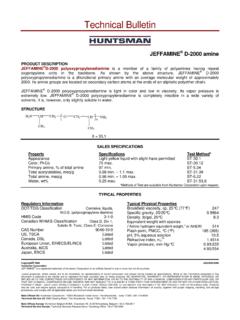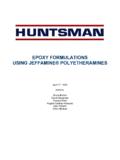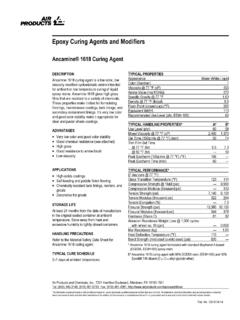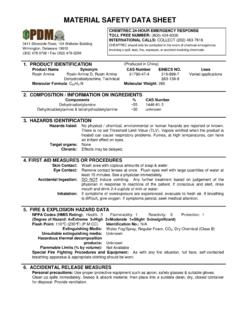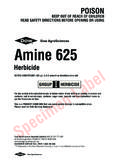Transcription of Homage to Amine El Bacha - Sursock Museum
1 Homage to Amine El BachaPartitions and Colors15 September 2017 12 March 20183 Amine El Bacha s paintings reflect a profound artistic experience that arises from his travels and wanderings through different cities, his time spent in caf s, watching the world go by. The realms evoked in his work are studies of everyday life; through a familiar treatment of Oriental atmospheres and forms, he manages to reveal the unexpected that lurks at their heart. The space of his creation thus transforms into a theatrical one, realistic and sometimes fantastical.
2 At times, he narrates Oriental tales, unbound by anything but an imagination that opens out onto childhood memories and a mysterious, poetic sensibility that reveals itself in his musical composi-tion of color and form. Like a wanderer, taking in the familiar forms, views and landmarks encountered on his walks, always paying attention to the particularities of a place and its relationship to the people that inhabit it. The works in this exhibition, selected from amongst a considerable oeuvre that tackles a range of subjects in a range of materials, are grouped into four main categories: abstractions and landscapes; the fantastical; religion and the Last Supper; and music.
3 These works showcase the transformations in El Bacha s artistic trajectory: from abstract moods bordering on freeform expression to an aesthetic stylization of melodious, improvisational color that establishes a new world of harmony in the composition of form (land-scapes, still life, the theater of journeys and memories). El Bacha does not paint what the eye perceives so much as he depicts what is revealed by his desires as they wander freely in a poetic space, encountering colorful and unrestrained feeling. Subjects are embodied as another facet of one s interior space, consecrated for the purpose of joy, the fantasy of happiness.
4 Images are transposed atop images, emotions atop emotions. There is a persistent inclination toward re-balancing and re-ordering things, not so they might resemble their guises in reality, but to disclose the way they appear in dreams. A daydream where the flow of emotions, which Freud refers to as the raw material of memory, drifts into the earliest recollections of childhood. Amine El Bacha in his studioAmine El Bacha Foundation collection4 TopUntitled, UndatedOil on canvas, 48 51 cmAmine El Bacha Foundation collectionBottomPaysage (Qartaba, r gion de Byblos) [Landscape (Qartaba, Byblos District], 1988 Watercolor on paper, 24 cmAmine El Bacha Foundation collection5 Amine El Bacha : Memory in the Palms of His HandsFay al SultanAmine El Bacha is a prominent Lebanese artist who has left an important mark in the art world locally, regionally, and beyond.)
5 He belongs to the small cadre of Arab artists whose works have been acquired by museums in Italy, Spain, France, and the Arab region. Born in 1932 in Ras Al Nabaa, Beirut to a family passionate about painting and music, El Bacha began to master painting color through memory during the period when he was frequenting the studio of Hungarian painter Stefan Lokos. With Lokos, he started to go on open-air (en plein air) painting excursions, taking in city-scapes of Beirut from the rooftops of its residences, gardens, and seaside caf s. This period preceded his studies from 1954-1957 at the Acad mie Libanaise des Beaux-Arts (ALBA) in the studios of C sar Gemayel and Jean-Paul Khoury, as well as that of Fernando Manetti from Italy.
6 In 1959, El Bacha received a scholarship from the Embassy of France to pursue his studies at the cole Nationale Sup rieure des Beaux-Arts, Paris, in the stu-dio of Maurice Brianchon, and at Acad mie de la Grande Chaumi re, Paris, in the studio of Henri Goetz. It was during his time in Paris (1960-1968) that El Bacha crystallized an approach to experimenting in abstraction. He experimented with reconstructing nature through color semiotics, based on the presumption that color develops with both vision and musical sen-sibility, influenced by light, temperature, and climate.
7 He discovered that modernism constitutes a return to the basics of childhood to an intuitive spontaneity that arises from a primitive impulse. For El Bacha , abstract art, consecrated by studios in the academies, emerged from Cubism and from the particularities of art from the Orient, an art that relies on simplification and flattening to create the essence of Bacha could not shake off the magic lavished upon him by Paris, where he spent most of his time visiting exhibitions and museums, and painting the city day and night. He painted people in caf s, streets, theatres, and public squares, especially the artists square of Montparnasse.
8 Many artists influenced El Bacha during this period: the paintings and writings of Paul Klee, the experiments of Pablo Picasso, and the arts of the Orient that fused the figurative and the abstract. His artistic influences including those afforded to the Color Field movement further inspired his experi-mentations with color, where dynamically daubed surfaces of color as well 6as musical rhythms were at play. Indeed, a sense of color local to Lebanon remained prevalent in El Bacha s work during his time in Paris. Most of his friends, among them Farid Aouad, could perceive the climate of Beirut in his colors; so, his memory of color during this period, which continued for about a decade, was not readily willing to surrender to the effects of life in the palette of this time, El Bacha was painting with an abstract perspective, reflected in his ability to create a bird s eye view aesthetic wherein colorful landscapes were at once distilled, intersecting, and discordant.
9 This aesthetic erased detail and mirrored the eloquence of shorthand and brevity. Exemplars of these experiments were exhibited in the Alexandria Biennial (1962); the Salon des Surind pendants (Paris, 1964); the residence of his friend the architect Wathiq Adib (Beirut, 1964); the Salon des R alit s Nouvelles in the National Museum of Modern Art (Paris, 1966); and in Gallery Manoug (Beirut, 1967).In 1968, El Bacha s style began to shift toward expressionism as he began to evoke memories of his childhood and to tap the springs of local, or Lebanese, themes while tuning his ear to the melodies of contemporary logic, thereby integrating the influences of figurative reality and the abstract.
10 (Exhibition at Gallery Saad, 1971 and Gallery Contact, 1972.)Work in ItalyWith the start of the Lebanese Civil War, El Bacha traveled to Italy in 1976 upon an invitation from the Educavi Maesta Foundation. He signed a five-year contract with the foundation s international director Giorgio Cena, who had collaborated with renowned international artists, including Corneille Guillaume Beverloo (Netherlands) and C sar Baldaccini (France). In 1979, El Bacha won an international competition to design the mosaic of the church of San Martino in the city square of Legnano, Italy.
